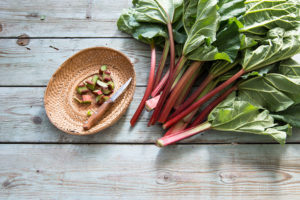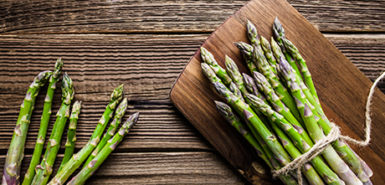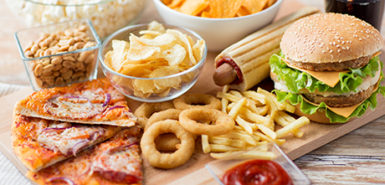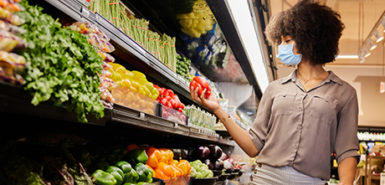
There’s no denying that, as fresh produce goes, rhubarb is a little unusual.
How else can you describe a vegetable that acts like a fruit? A healthy treat that’s often drowned in sugar? That has delicious stalks but leaves that can potentially be harmful?
Even its name says weirdo, derived from the ancient Greek for “not from around these parts.”
Don’t hold any of that against those colorful celery-like stalks, said Caren Dobreff, a dietitian at Spectrum Health, who loves the way rhubarb welcomes summer into the kitchen.
“Like an ice cream cone or a slice of watermelon, rhubarb is one of those flavors that can just reawaken your childhood memories and remind you why eating fresh produce in season is so much fun,” Dobreff said.
She recalls munching it as a kid, growing up in rural St. Johns, Michigan.
“My mom would give it to me raw, for a treat, and let us dunk it right in the sugar bowl,” she said.
Like all produce, it’s naturally good for you.
A cup of raw diced rhubarb has just 26 calories and contains 16% of the recommended daily allowance for vitamin C, 45% of the harder-to-find vitamin K, 10% of potassium and calcium and 12% for manganese. It also has 2 grams of fiber.
The stalk is also loaded with anthocyanins, antioxidants that help protect blood vessels and blood pressure. It may also offer protective anti-inflammatory and anti-cancer effects. (Those become even more powerful after cooking.)
It’s so nutritious, in fact, that it comes with some warnings.
People taking vitamin K-related blood thinners, such as warfarin or Coumadin, might need to limit their rhubarb intake, Dobreff said.
And people at risk for kidney stones due to high oxalate should also ask their doctors about rhubarb. While most of the plant’s oxalic acid is located in the leaves—part of the plant’s defense mechanism—there is some in the stalks, too.
Embrace the ‘Wow’ factor
The real reason to get ready for rhubarb isn’t nutrition, Dobreff admits. It’s because the plant’s intensely tart, fresh flavor is one of the summer’s greatest pleasures.
Look for stalks that are bright red and firm but not too bendy, which can mean they’ll be stringy. And avoid the biggest pieces, which tend to be more bitter. Rhubarb keeps nicely in the crisper and also freezes well.
Dobreff admits rhubarb requires making peace with some added sugar. Without it, the plant is more or less inedible.
But try experimenting with smaller amounts than many recipes call for. Also try different types.
“Honey and maple syrup, for example, also work,” Dobreff said. “And add a different flavor.”
Here are six ways Dobreff likes to enjoy a rhubarb splurge:
1. Rhubarb sauce
Cooks swear by the versatility of a simple sauce, whether it’s served over ice cream, swirled into yogurt or used as a topping for a cookie or cake.
Just cook up chopped rhubarb, add sweetener and any flavoring you like. Vanilla, ginger or cardamom work well.
While many cooks would call for 1 full cup of sugar to 4 cups of rhubarb, Dobreff thinks that can be reduced, especially by adding other fruits. (Try a berry—any berry.)
Add a little water and simmer for 30 minutes.
2. Fancy roasted rhubarb
Bon Appetit suggests slicing rhubarb on the diagonal, adding a whole vanilla bean, sliced ginger and brown sugar, then roasting at 350 for about 20 minutes.
3. Strawberry-rhubarb pie
It’s a classic for a reason. And while there really is no such thing as a low-calorie pie—crusts depend on fats, after all—there are plenty of healthier versions.
You may find you love this one, with a whole wheat crust. Dobreff, whose parents also had a massive strawberry patch, is especially keen on this taste combo.
“It just tastes like childhood to me,” she said.
4. Braised rhubarb
A more exotic approach is braising, a moist cooking method. This recipe uses orange juice, fragrant cardamom, star anise and vanilla to spice things up.
5. Chutney
Dobreff recommends this easy-to-prepare chutney as an unexpectedly zingy condiment to grilled chicken.
6. Smoothies
Tossing rhubarb into summer smoothies will likely require adding a tablespoon of honey, but it’s worth it. Don’t get hung up on classic combos. Rhubarb pairs well with berries, peaches, plums, nectarines, even watermelon.
Toss in some fresh ginger for a little kick and a little extra protection from inflammation.
Finally, she says, you may find you like rhubarb so much you want to grow your own.
Early spring is the best time to plant rhubarb, typically ordered in crowns from a garden supply store. It’s also the best time to divide existing rhubarb plants.
Look for a spot on the edge of your garden away from other vegetables, and space the plants accordingly.
One of the reasons gardeners love rhubarb plants is for their size, about 3 to 4 feet in diameter. The other is their ruggedness. Michigan rhubarb is famously hard to discourage.
But it does require some patience, as you need to wait a season or two for your first harvest.
 /a>
/a>
 /a>
/a>
 /a>
/a>
My mother made the sauce and then put it over baking powder biscuits. Hot sauce or cold sauce. Both are wonderful! She called it Rhubarb Shortcake. I’m 84 and still make it. Love it!
I would add 1 cup sugar, 4 cups bite-size rhubarb, and 1 1/4 liter of vodka, let it sit for about 4 months, you will a rhubarb infused vodka.
Love the idea of sauce with biscuits. Love it on Angel food cake.